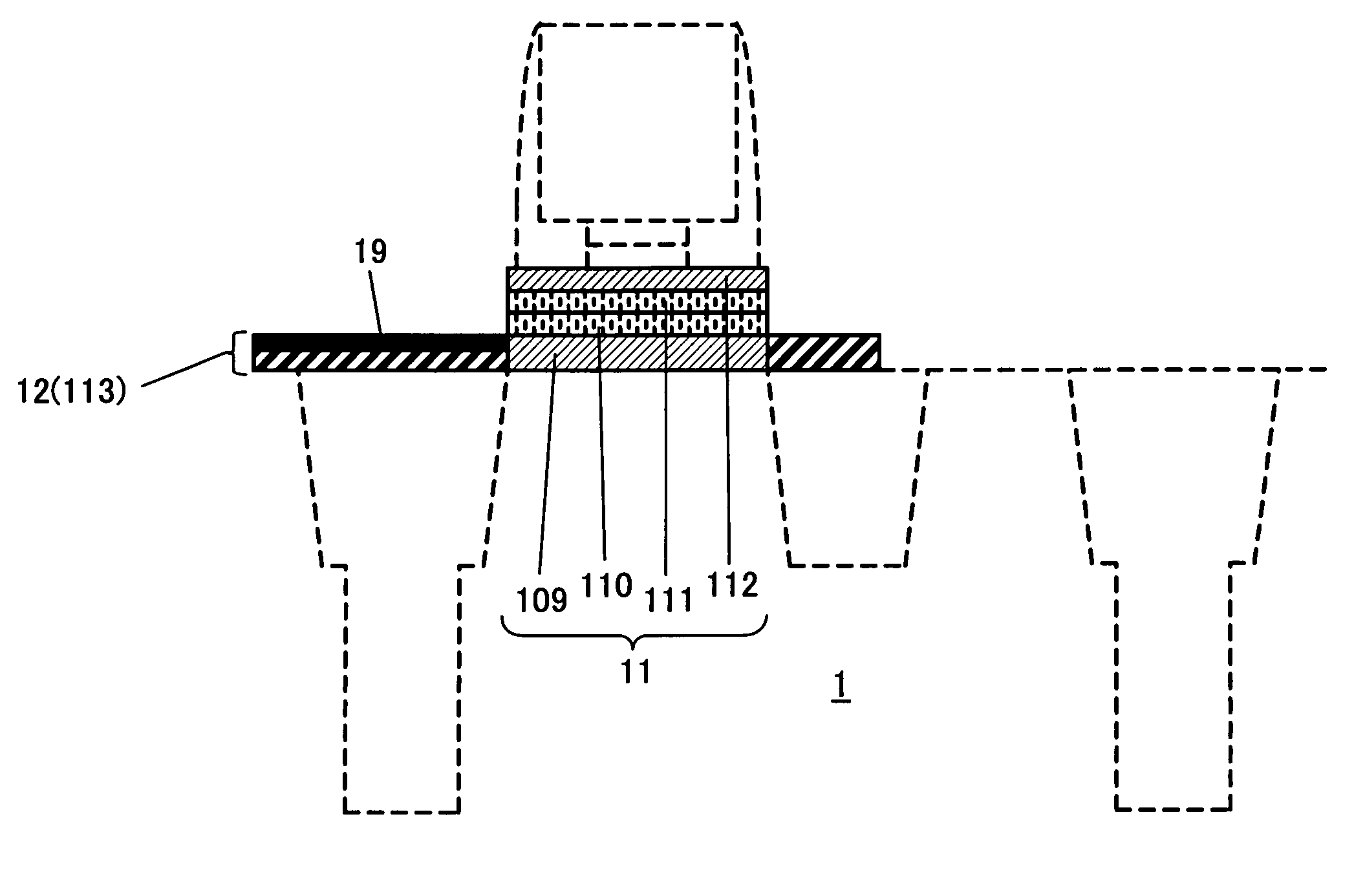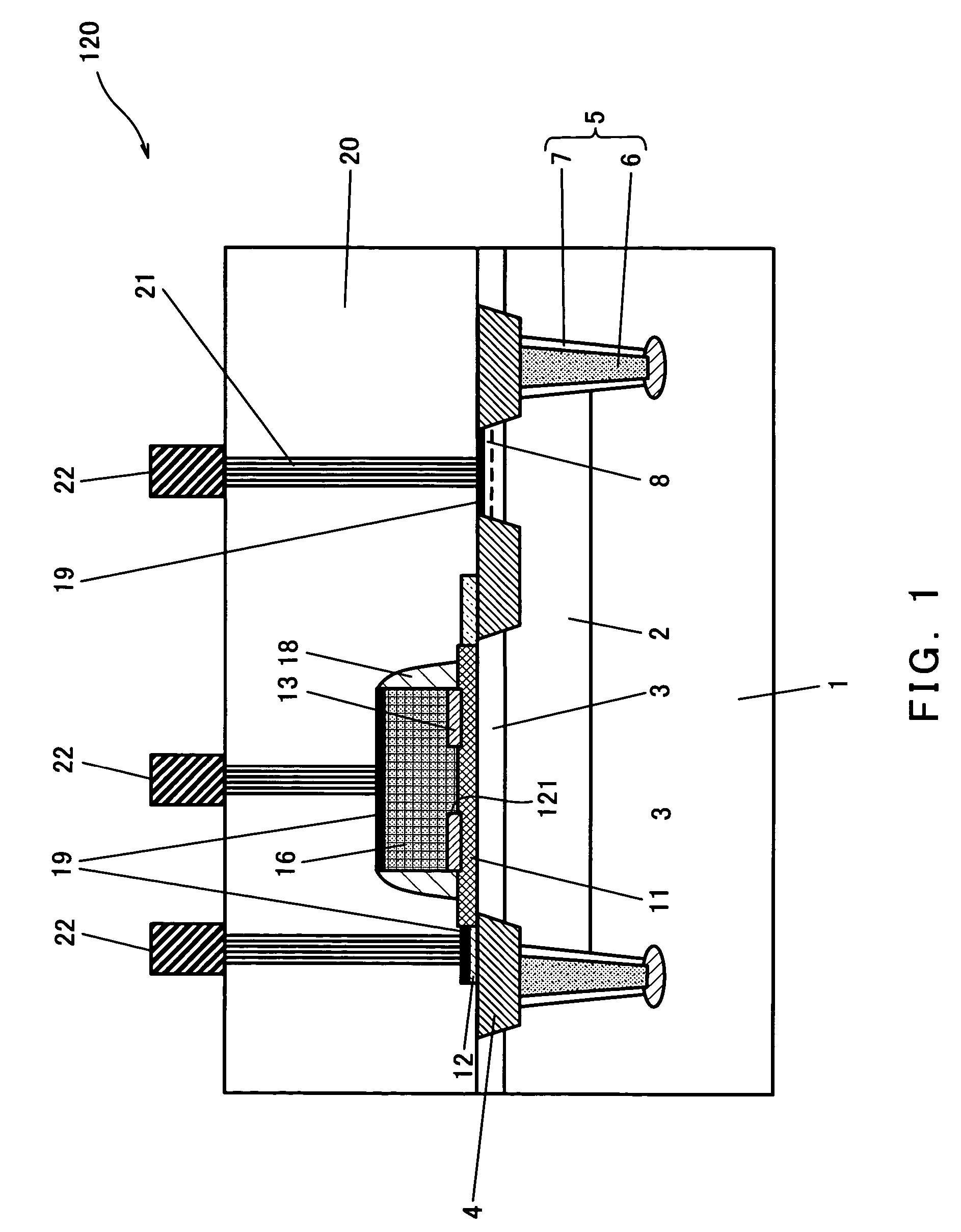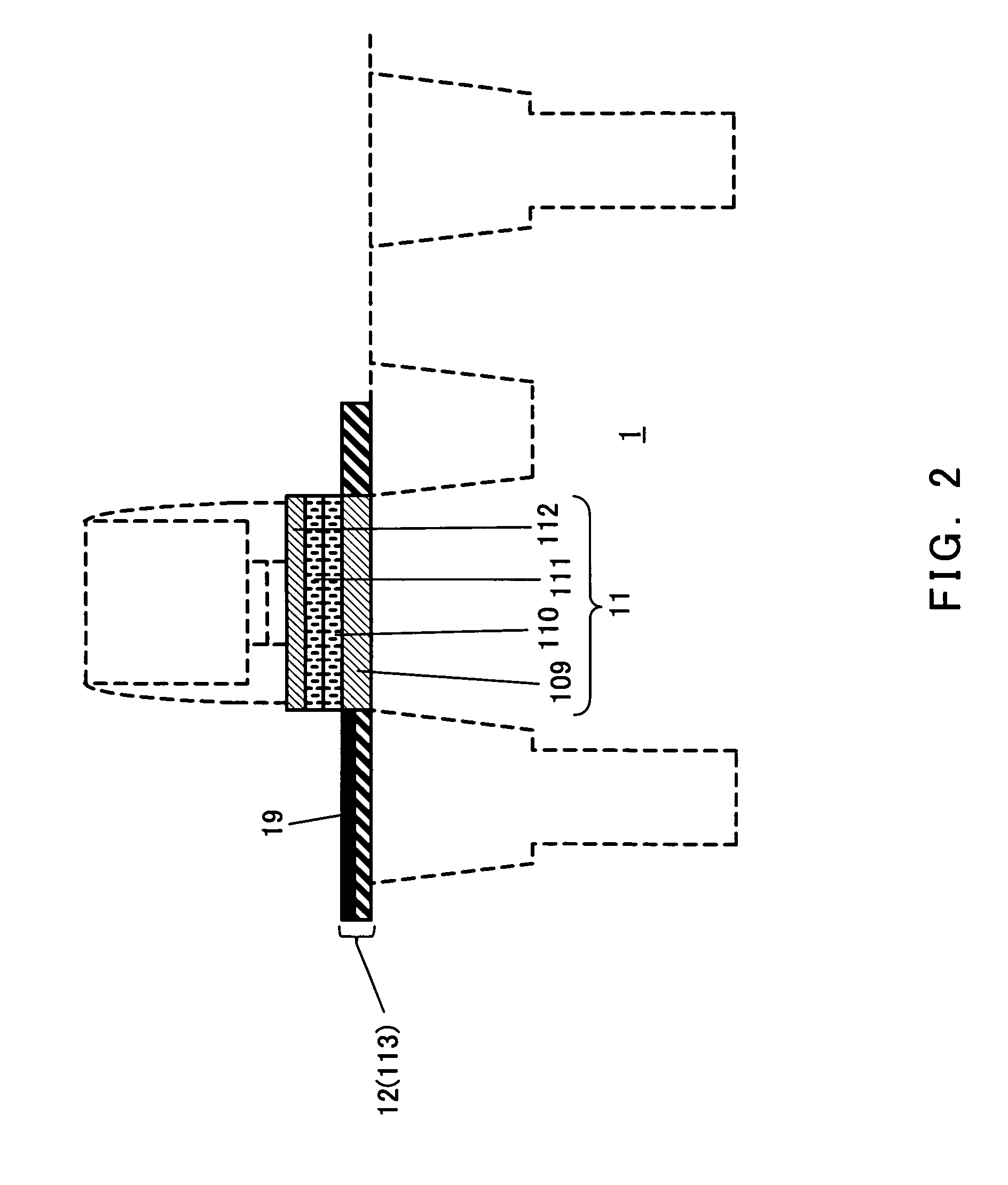Heterojunction biploar transistor and method for manufacturing same
a technology of heterojunction and transistor, applied in the direction of basic electric elements, electrical apparatus, semiconductor devices, etc., can solve the problem that the ge composition profile optimized in the intrinsic base region is not necessarily suitable as a ge composition profile, and achieves the prevention of high silicide resistance resulting from ge atoms, high manufacturing cost, and high transistor performance.
- Summary
- Abstract
- Description
- Claims
- Application Information
AI Technical Summary
Benefits of technology
Problems solved by technology
Method used
Image
Examples
first embodiment
[0075]FIG. 1 is a sectional view showing a configuration of SiGe HBT of a first embodiment in the present invention.
[0076]As shown in FIG. 1, arsenic ions are implanted into a surface of a P-type Si substrate 1 to form an N-type subcollector region 2 having appropriately 1 μm depth. A Si monocrystal layer 3 having 0.5 μm thickness epitaxially grows on the Si substrate 1 and the subcollector region 2 while doping an N-type impurity so as to covers the substrate 1 and the subcollector region 2.
[0077]A shallow trench 4 buried with a silicon oxide layer is formed so as to extend from a surface of the Si monocrystal layer 3 to the Si substrate 1, as an isolation region. And, a deep trench 5 comprising a non-dope polysilicon layer 6 and a silicon oxide layer 7 enclosing the polysilicon layer 6 is extended downward from the shallow trench 4 and formed inside the Si substrate 1.
[0078]A HBT formation region is enclosed with the deep trench 5 and the subcollector region 2 is formed inside the...
second embodiment
[0140]FIG. 15 is a sectional view showing the SiGe HBT of a second embodiment in the present invention. FIG. 16 is a sectional view showing the base layer (the intrinsic base region 11 and the extrinsic base region 12) of the SiGe HBT. Elements but the extrinsic base region 12 is abbreviated with dot lines.
[0141]Configurations of the SiGe HBT 130 shown in FIG. 15 except for the extrinsic base region 12 are the same with that of the SiGe HBT 120 of the first embodiment (FIG. 1). Therefore, explanations on common configurations are omitted and the extrinsic base region 12 is explained with reference to FIG. 2.
[0142]In FIG. 16, the extrinsic base region 12 comprises the first polycrystal layer 113 as the extrinsic base formation layer, the second polycrystal layer 114 as the extrinsic base formation layer, the third polycrystal layer 115 as the extrinsic base formation layer, the fourth polycrystal layer 116 as the extrinsic base formation layer, and the Co silicide layer 19. These lay...
PUM
 Login to View More
Login to View More Abstract
Description
Claims
Application Information
 Login to View More
Login to View More - R&D
- Intellectual Property
- Life Sciences
- Materials
- Tech Scout
- Unparalleled Data Quality
- Higher Quality Content
- 60% Fewer Hallucinations
Browse by: Latest US Patents, China's latest patents, Technical Efficacy Thesaurus, Application Domain, Technology Topic, Popular Technical Reports.
© 2025 PatSnap. All rights reserved.Legal|Privacy policy|Modern Slavery Act Transparency Statement|Sitemap|About US| Contact US: help@patsnap.com



